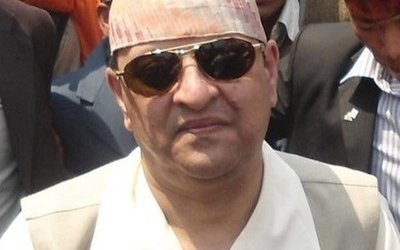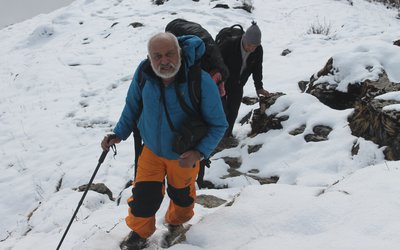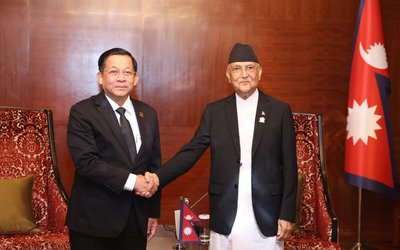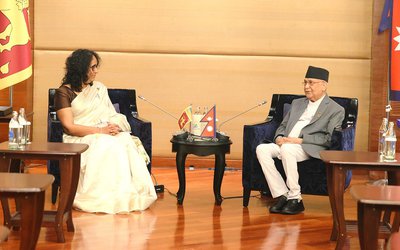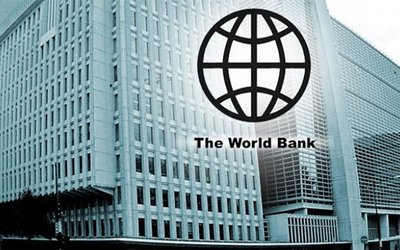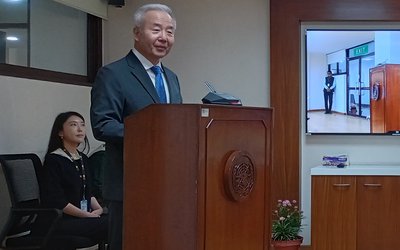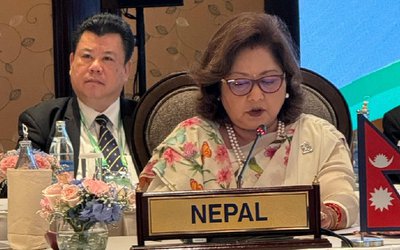Can we create water-secure cities in Nepal or are we driving towards more water crises leading to water warsas recently observed between Tamil Nadu and Karnataka, two southern based Indian states?Tamil Nadu asserts it is not receiving enough water and accuses Karnataka for holding it in its reservoirs whereas the latter claims that the former is demanding for more than it actually is entitled. This is just a trailer-made case and the reality is that water insecurity is not a new issue but it is increasingly becoming one of the most critical challenges for the cities in South Asia in the 21st century. The rapidly urbanizing cities of South Asia are becoming more water vulnerable and insecure due to rising population, increasing numbers of middle class and an unsatiated hunger for growth and development in the era of climate change.
Nepal is one of the poorest and fastest urbanizing countries in South Asia. The rapidly urbanizing cities of Himalayas are facing acute water scarcity. An urban fresh water crisis is looming in our cities, where large water infrastructures are costly to develop, maintain and sustain. Ensuring equitable access to water while financing the mega water infrastructures and maintaining the water ecosystem wellbeing are grave challenges the country is confronting. Furthermore, our cities are often slow to respond to water crisis due to conflicting political, economic, governance and institutional interests. As a result, the urban population—women, poor, marginalized, disabled, aged, and socially excluded groups among others bear disproportionately higher costs for meeting their basic water needs.
Most of our cities are water-starved. Let’s examine the water-poverty of three cities, Kathmandu, Dharan and Dhulikhel. Kathmandu is the capital city of Nepal. The Kathmandu Valley’s water demand is more than 320 million liters per day, while Kathmandu UpatayakaKhanepani has been supplying only about 68 million liters per day during the dry season and 118 million liters during the rainy season. Water leakage is about 20 per cent. According to the Nepalese government’s Central Bureau of Statistics one in every five Kathmandu households has no access to a domestic water source and two-thirds of its urban households live with an inadequate water supply.
The case of Dharan further illustrates the extant and looming crises of water. Dharan serves as a gateway trading post between the hilly region and the plains of Tarai region. It was previously divided into nineteen wards but as per the decision made by the Cabinet on May 8, 2014, it is now divided into 27 wards annexing Panchakanya and Bishnupaduka VDCs to upgrade it to a sub-metro-polity in 2014. Dharan residents and increasing number of migrants to this foothill city are reeling under acute shortage of drinking water. Many of them have been forced to walk long distances, queuing for hours to fetch water or use untreated water from local rivulets. Nepal Drinking Water Corporation of Dharan has only been able to supply 15 million liters of water whereas the demand is 30 million liters per day and this water supply is largely confined to rainy season, with the supply being intermittent, untreated and unsafe.
Dhulikhel is a rapidly emerging satellite city of Kathmandu and it bears prime importance from commercial point of view and trade link to Tibet—the autonomous region of China. Dhulikhel is part of the Kavre Valley, which comprises Dhulikhel, Banepa and Panauti as major urban centers. The city has piped connection to 48% percent of households and the demand of water is about 23 million liters but supply is only 13.83 million of water per day. The gap between supply and demand is precarious and it is escalating every day as the city population is rapidly mounting up.
It is ironic to point out that the capital of the worlds most water abundant country through which about 6,000 rivers and rivulets flow is in acute water crisis but it is a fact of our inability to manage water in appropriate and effective way.Also, many of the rivers that flow through Nepalese cities are not clean, wells are drying up, the groundwater table is dropping and the water distribution system is poor,and inefficient.Cities like Kathmandu, Dharan and Dhulikhel including many others need incremental and transformative changes in the supply and demand side management of water. Although ADB funded Melamchi water project for Kathmandu Valley, Kavre Valley Integrated Water Project Dhulikhel, and Integrated Urban Development Project Dharan might provide some hopes but they are still distant and will become unsustainable as population of the cities keeping rising unchecked.
Some of the fundamental features of water concerns of the our cities include climate change impacts on the critical urban water zones; mismanagement resulting into incongruity between supply and demand side (the water sources of these cities remain constant or declining but demand is rising day by day); upstream downstream conflicts; exponential expansion of city size and households; and water intensive agricultural practices. Above all, there has been no elected council for the past 13 years for making public accountable decisions to improve water governance challenges in tackling fundamental drivers of water scarcity.
Concrete actions from incremental local solutions to transformative infrastructural development to metering, leakage control, more efficient and smart water taps and showers use, rainwater harvesting, watershed conservation, management of upstream downstream conflicts, introduction of payment of ecosystem services, generating water awareness and getting the water governance right for equitable distributions are desperately required to make these cities water secure. New and integrated approaches of the good practices of water management being practiced in Israel, Singapore, and Jamshedpur India can provide pathways for impacts on large scale for Nepalese cities to be water secure by avoiding looming water crisis in the aegis of climate change, rapid globalization, growth of demography and middle class.
Dr. Pandey is Senior Research Fellow at Southasia Institute of Advanced Studies & a member of faculty at Graduate Program of Crisis Management Studies Tribhuvan University. His current research focuses on water and disaster governance.
- 16thPeriodic Plan for Delivering Basic Services and Fundamental Rights?
- Feb 08, 2024
- Disaster Governance: Theory And Practice In Nepal
- Dec 05, 2023
- Haphazard Urbanization Or Sustainable Smart Cities In Nepal?
- Jun 28, 2023
- Say No To Pre-Election Coalition
- Jul 14, 2022
- Nepalis Are Optimistic:Findings Of SNP 2020
- Apr 12, 2021



